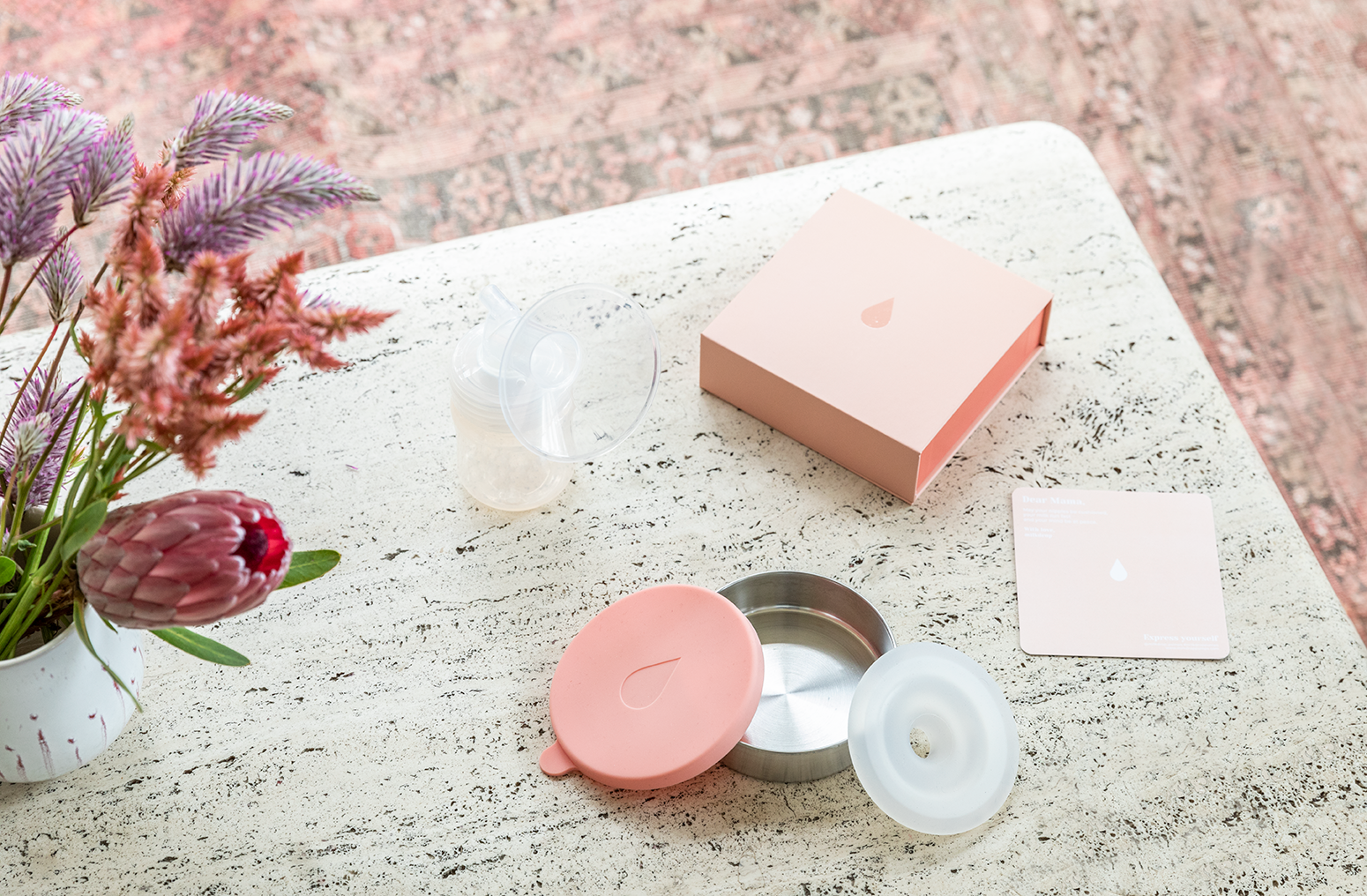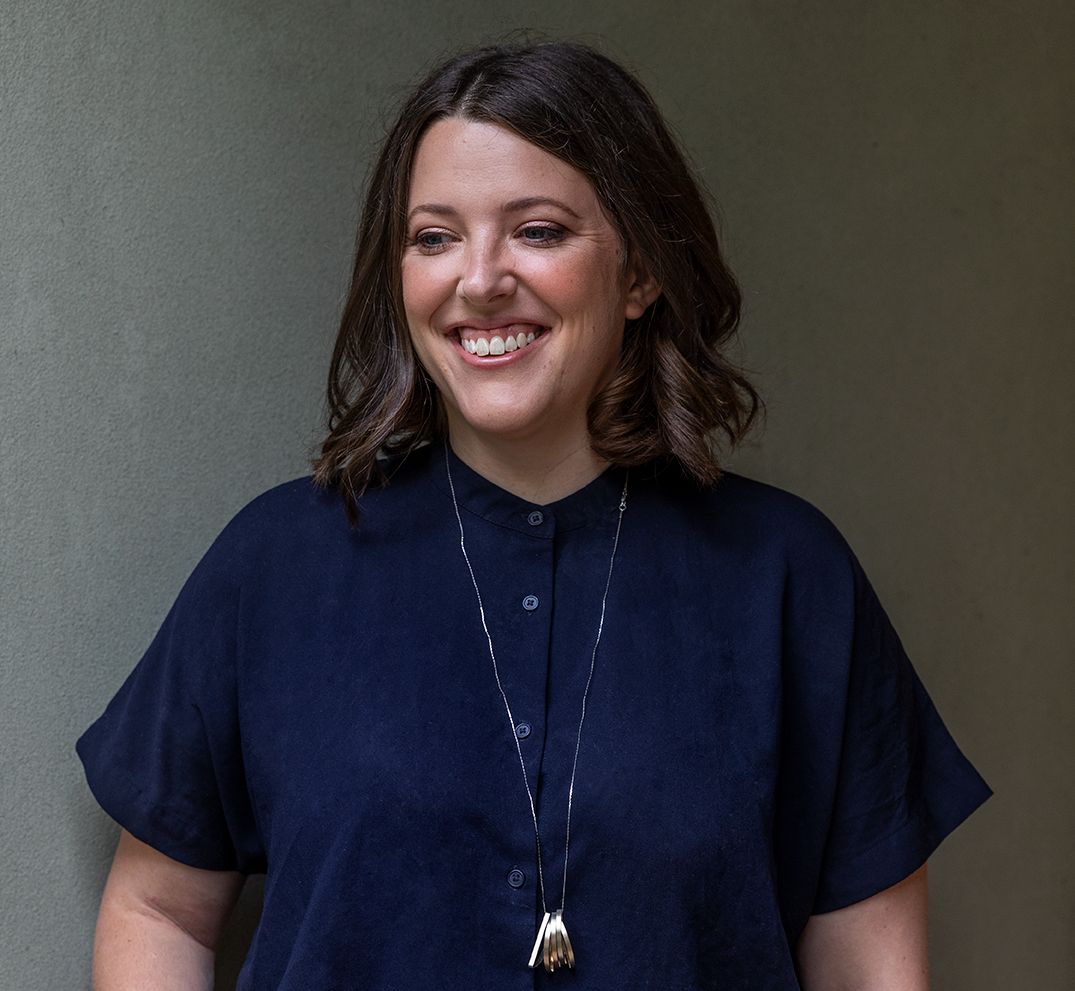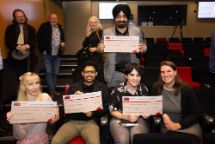Startup revolutionises the breast milk expressing experience

Milkdrop’s super soft breast pump cushions are helping reduce pain and discomfort for women expressing breast milk.
In summary
- Startup Milkdrop is improving the experience of expressing breast milk with their ultra-soft breast pump cushion
- Milkdrop won Swinburne’s Venture Cup in 2019 and has secured government funding for a pilot, which led them to launch in Australia last month
- Founder, Alexandra Sinickas worked with a Swinburne team to design, test and develop the successful prototype
Swinburne 2019 Venture Cup winner and 2020 Accelerator Program participant, Milkdrop has launched its first product in Australia: a super soft breast pump cushion that stretches onto the heads of existing pumps, reducing pain and discomfort for women expressing breast milk.
Milkdrop, led by Alexandra Sinickas, brought their product to market in Australia with the help of the government’s Boosting Female Founders Initiative grant.

Ms Sinickas came up with the product as a result of her own experience using breast pumps to express milk.
‘I had all kinds of trouble – pain, damage, frustration – when I was expressing milk for my daughter. Having seen soft materials used in other products and in research projects I worked on in the past, I thought we might be able to make a pump that was extremely comfortable and better mimicked a baby suckling,’ Ms Snickas explains.
An engineer herself, Ms Sinickas worked with Design Technical Officer, Ravi Bessabava, from the Swinburne School of Design and Architecture’s ProtoLAB and Lecturer in Architectural Engineering, Daniel Prohasky, to create a prototype of the breast pump cushion.
The design process
In designing the prototype, Mr Bessabava and Mr Prohasky spent time trying to understand the body’s physiological system and how it might react to the breast pump cushion.
‘The design parameters are not as clear cut when you’re working with the human body as in architectural engineering. For example, in architectural engineering we know we must resist gravity, wind and earthquake loads using suitable materials to stabilise the building. In this case, all we knew from Alex’s early user research was that 70 per cent of women experience pain or discomfort when pumping,’ Mr Prohasky explains.
‘We needed to understand the physics behind how the soft tissue of the breast might move relative to our cushion, but there were limited standard methods of measurement or datasets we could refer to,’ he adds.
‘We needed to develop a soft skin interface that was as safe as possible, so we settled on silicone as the most suitable material. Using biopolymer 3D-printed moulds and skin-safe silicone, we developed over 20 iterations using a design, prototype, test and analyse method,’ says Mr Bessabava.
Mr Bessabava and Mr Prohasky worked with Ms Sinickas and her husband, who is a medical doctor, to understand their experiences and the feedback they had collected from other women using pumps.
‘We settled on the key drivers for design being soft materials, the shape of the cushion and its motion to match how a baby suckles,’ Mr Prohasky adds.
Ms Sinickas tested each of the team’s prototypes herself to further refine each iteration towards a product that could be brought to market.
Supply chain disruptions brought about by COVID-19 also presented challenges for the team.
‘There probably hasn’t been a single business unaffected by COVID-19 and we were no different. Supply chains around ultra-soft high grade medical silicone were tightened and it was difficult to secure supply. Although it extended our lead time to market, it gave us the opportunity to refine our packaging and branding experience, which we did with Christina Galanakis, an amazing branded environment student intern’ Mr Bessabava recalls.
What’s next for Milkdrop?
‘From our research, we found that for every ten women using a pump, seven have nipple discomfort or pain and eight feel like a cow. Given that in the English-speaking world, around 85 per cent of babies will have a mother that pumps, that’s millions upon millions of women having their frustration and discomfort overlooked,’ says Ms Sinickas.
Milkdrop’s mission is to change how women feel about pumping by redesigning the pump from the nipple up. The pump is currently in the prototype stage and the team plans to progress it to manufacture over the next year.
‘These cushions have already changed the way many women feel about pumping. We’ve met women who say they would have otherwise given up breastfeeding and others who wish they’d had the product earlier. We’re so happy to have been able to help, and to start to launch our cushion and pump outside Australia too.’ Ms Sinickas concludes.
Visit Milkdrop's website to browse their products.
-
Media Enquiries
Related articles
-

- Design
Swinburne alum launches zine celebrating Asian Australian art and identity
Swinburne Graphic Design alum Dan Truong founded HOISZN, a zine publication showcasing Asian Australian artists and their work.
Monday 01 July 2024 -

- Design
Swinburne students shine in lighting design collaboration
Swinburne students collaborated with About Space Lighting, resulting in several student-designed lamps being put into production.
Friday 07 June 2024 -

- Business
- Technology
Swinburne’s Luminate Pitch Night 2024 advances innovative ideas for a better world
Swinburne’s 2024 Luminate Pitch Night showcased market-ready ideas from 10 founders
Wednesday 12 June 2024 -

- University
Swinburne University of Technology partners with Grande Experiences and THE LUME Melbourne for cutting-edge Immersive Media education
Swinburne University of Technology is proud to announce its partnership with Grande Experiences and THE LUME Melbourne, enhancing the future of Immersive Media education.
Thursday 13 June 2024 -

- Design
Yarra Trams feature Women in Trades campaign designed by Swinburne students
School of Design and Architecture students in Swinburne’s Bureau collaborated with Tradeswomen Australia Group to design a tram wrap celebrating women in trades.
Thursday 16 May 2024

